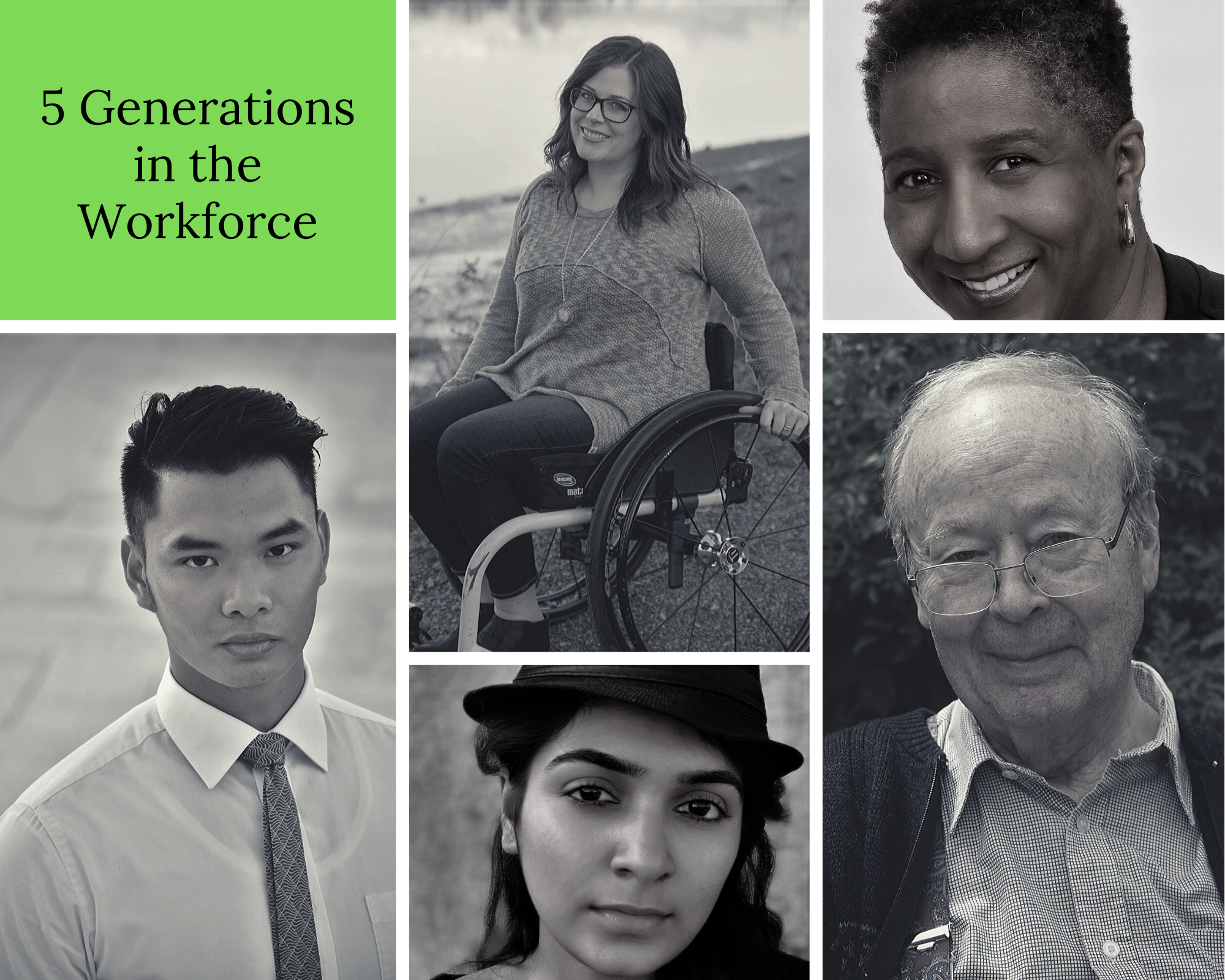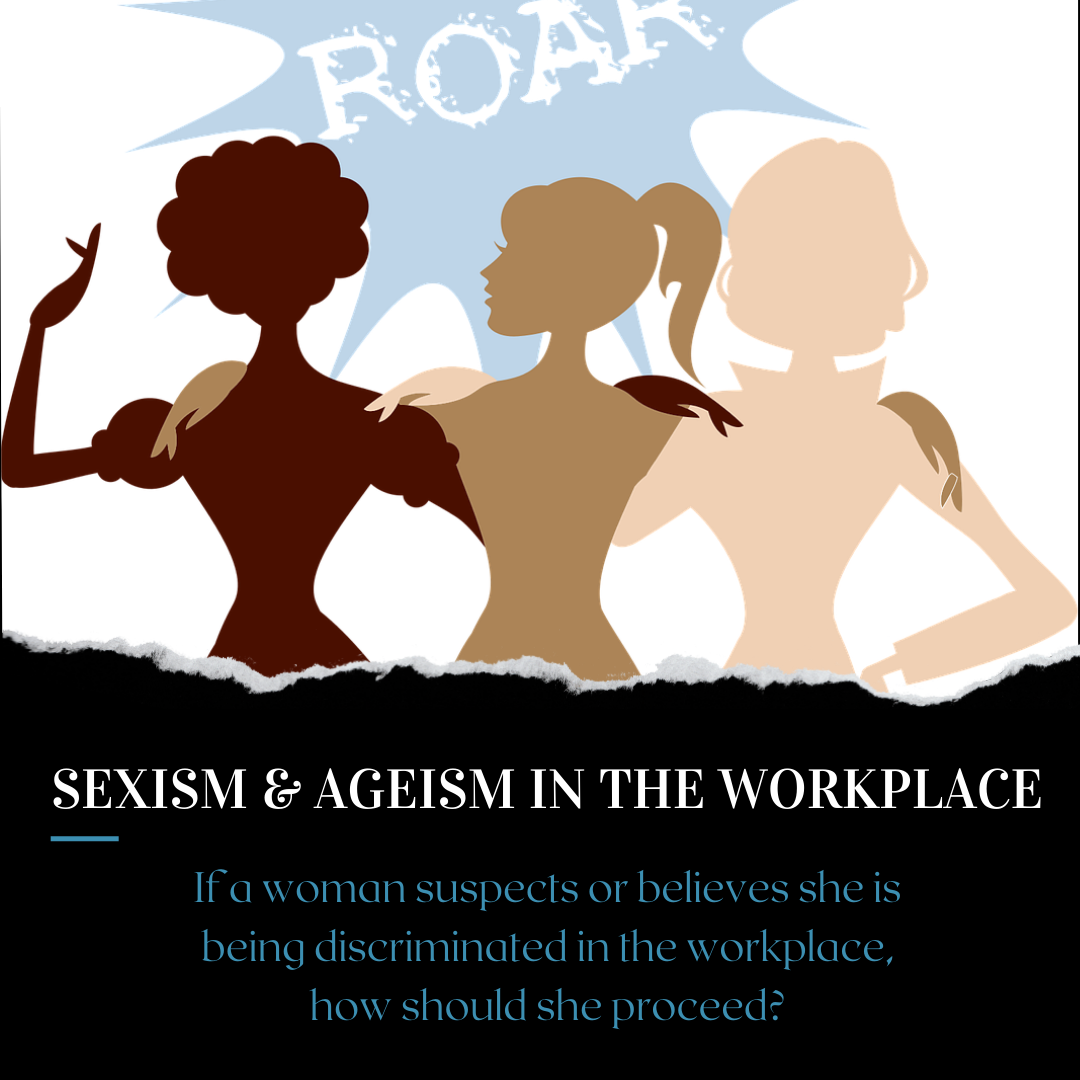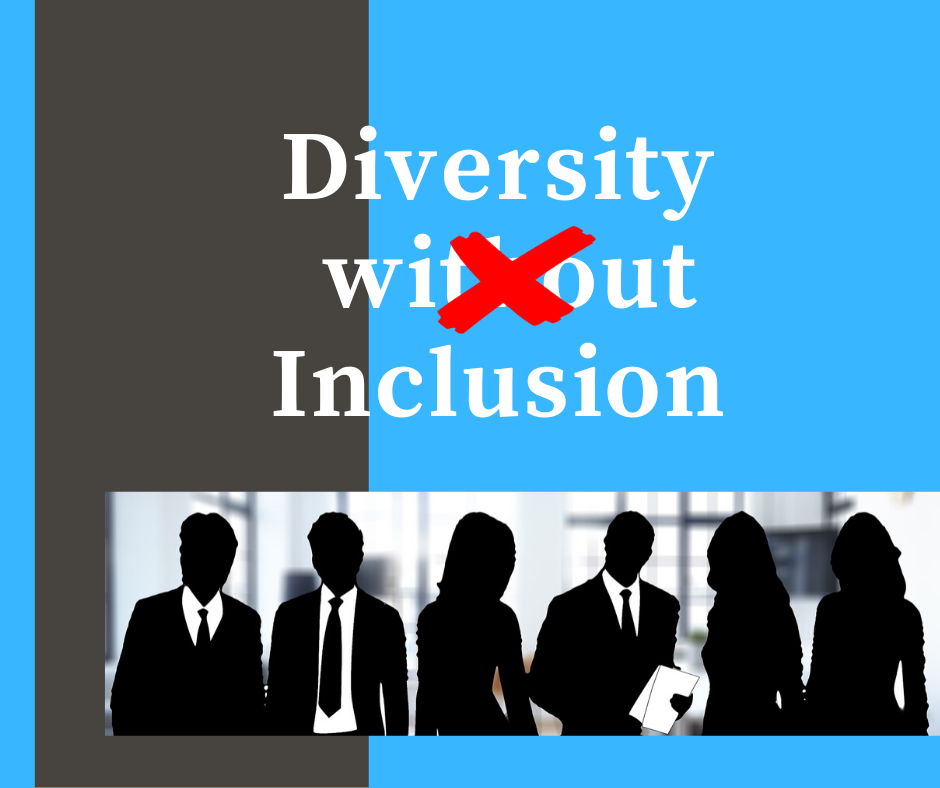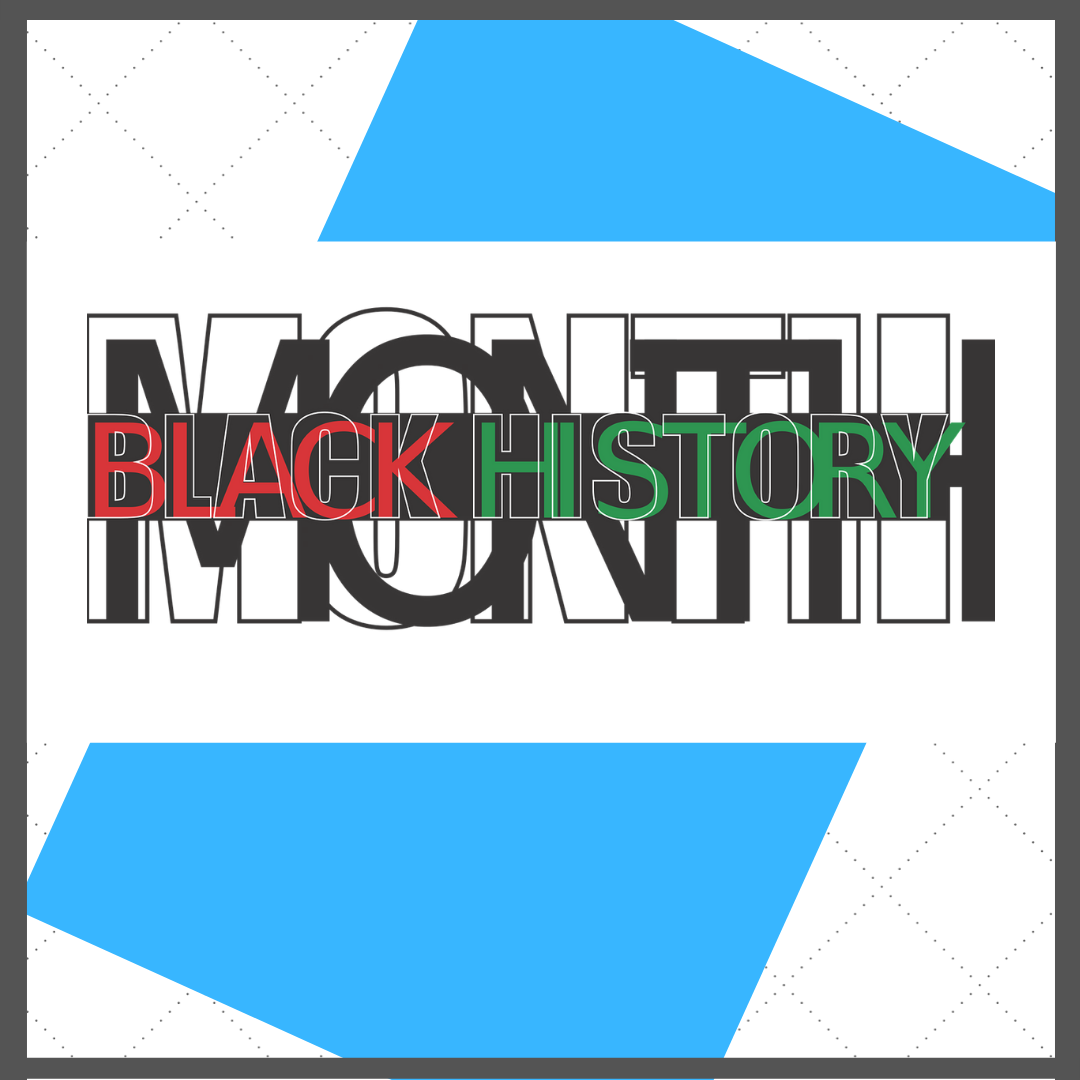As humans get healthier and longer-lived, they are working longer. Not just longer days, but more years in the workforce. In fact, for the first time ever, there are FIVE generational cohorts simultaneously working – yet another example of organizational diversity.
As research as shown, to create a truly successful workforce you must recruit and retain a diversity of top talent from all backgrounds and abilities. This means understanding, including and celebrating people from each generational cohort.
Generational Breakdown
The cohort definitions, of course, are a bit loose. Ask two same-aged co-workers if they’re Baby Boomers or Gen Xers and you might get different answers. Some people will tell you that regardless of the cohort in which they were born, they most identify with a cohort that is outside of their own. Even some experts disagree on which year one cohort ends and another begins. All that to say, take the information given on generational cohorts to be ‘a loose guideline’.
But the generally accepted divisions are:

The Silent Generation
also known as Traditionalists or Matures, born between 1925 and 1945. These are the 77+ workers who continue working.
Interesting facts: Known for their sacrifice. They are civic-minded, loyal, and hold great respect for authority. They are the oldest generation in the workplace and often bring the most experience.
Workplace motivation: For most, work is its own reward. Respect, promotions, and pay raises are also motivating.
Preferred recognition style: Subtle – personalized recognition and feedback.
Welcomed benefits: Health benefits, retirement funds, and company loyalty.
Workstyle: Longevity (often stick with one employer throughout their entire career), team players (like to work as part of a structured team), and tend to focus on longer term projects.
Preferred technology: Desktop computers, landline phones, and fax machines.
Preferred styles of communication: Personal touch, phone, and handwritten notes (over email – if appropriate).
Expectations: Robust voice capability and traditional desktop applications.
Baby Boomers
Large post-war cohort, born between 1946 and 1964. Many Boomers occupy senior positions at organizations and/or maybe contemplating retirement.
Interesting facts: Known for their hard work (coined the phrase ‘workaholic’), appreciate competition, and love effective communication.
Workplace motivation: Monetary rewards, peer recognition, value flexible retirement planning, and care deeply about climbing the organizational ladder.
Preferred recognition style: Acknowledgement of their input and expertise, prestigious job titles, reserved parking spots, and office size (measure of success).
Welcomed benefits: RRSP/401(k) matching, sabbaticals and “catch up” retirement fund bonuses.
Workstyle: Tend to commit to staying in the same field longer than Millennials, tend to switch employers more often than the Silent Generation and tend to focus on individual performance.
Preferred technology: Less likely to use social media at work and use smartphones less than younger generations.
Preferred styles of communication: Whatever is most effective including phone, face to face and email.
Expectations: Proper email tools, to be provided with specific goals and deadlines, and to be offered coaching-style feedback.
Generation X
also known as the Lost Generation, born between 1965 and 1980 and is the smallest generation to enter the workforce. Many Gen Xers are currently moving into positions vacated by retiring Boomers.
Interesting facts: Latchkey generation, first generation where many have parents that are divorced, and more independent than their predecessors. The first generation to introduce work-life balance, more likely to walk away from an in-flexible workplace and tend to challenge authority. They make up the largest generation of entrepreneurs.
Workplace motivation: Value bonuses and stock as monetary rewards and workplace flexibility as a non-monetary reward.
Preferred recognition style: Informal, rapid, and publicly communicated.
Welcomed benefits: Working remotely/telecommuting (home office), flexible workplace, and tuition reimbursement.
Workstyle: Embrace technology and enjoy using it.
Preferred technology: Smartphones, laptops, tablets, email and video conferencing.
Preferred styles of communication: Technological.
Expectations: Team based digital workspaces to meet flexibility requirements and video conferencing software and equipment.
Millennials
also known as Generation Y, born between 1981 and 1996. This cohort has never known a time when technology wasn’t ever-present. Millennials have a reputation, whether fully deserved or not, for changing jobs more rapidly than previous generations.
Interesting facts: Everyone gets a ‘ribbon’ generation, more debt than any other generation before them, and even more informal than Gen Xers. They are pragmatic, hopeful and determined. They are the driving force of today’s workforce.
Workplace motivation: Responsibility, strongly driven by sense of purpose, stock options as a monetary reward and value feedback as a non-monetary reward.
Preferred recognition style: Frequent (grew up in the age of social media – they expect ‘likes’ and ‘thumbs up’ immediately) and informal communication through company chat or social networks.
Welcomed benefits: Flexible schedules and continued learning options.
Workstyle: Interactive, collaborative and informative (constant feedback).
Preferred technology: Text message, instant message (IM) and social media.
Preferred style of communication: Interactive – NOT phone calls.
Expectations: Flexibility with their schedules and work assignments, to be provided with multiple electronic modes of communication and expect that you get to know them personally.
Generation Z
also known as Nexters, born between 1997 and 2015. The youngest kids on the workforce block, Gen Z is the largest, most ethnically diverse age group. Even more than Millennials, they have been immersed in technology since birth, and they are known for fast-paced multi-tasking.
Interesting facts: Largest cohort, competitive, independent and self-identify as digital device addicts.
Workplace motivation: Most base their job decisions on how tech savvy and diverse a workplace is, social rewards (mentorship), constant feedback, meaningful work and given added responsibility.
Preferred recognition style: Regular praise (in-person and public).
Welcomed benefits: Online training and certification programs.
Workstyle: Embrace independence and like competition, prefer to work with Millennial managers, innovative coworkers and new technology. Enjoy working on multiple projects at once.
Preferred technology: Video collaboration and video meetings.
Preferred styles of communication: Face-to-face, instant message (IM), text, and social media.
Expectations: Work-life balance, to work independently and self-directed, formal training, to interact with their boss on a daily basis and to be provided many options for electronic communication.
What will the 2025 workforce look like?
This graph depicts the projected size of the U.S. labour force (in millions) by age, for the year 2025.

It is predicted that in five short years, Millennials will dominate the workforce population at a percentage of 43.9%. Gen Xers will represent 28.8%. Boomers will come in at 15.5%. 11.4% of the workforce population will consist of Gen Zers and the smallest cohort will be the Silent Generation at a tiny 0.004%.
To take advantage of the organizational benefits that generational diversity does and will bring, it is critical that we learn to work and communicate effectively.
Communication
Different communication styles are linked to technology. Mature workers grew up in a time where people wrote letters to each other and may still retain formal notions, addressing emails to “Dear Mr./Mrs. so-and-so,” while younger workers may feel slighted when someone messages them without including an emoji. Regardless of cohort, all are struggling with a language that’s evolving faster than it ever has.
Perhaps even more difficult to surmount is the tendency for people to gravitate to people who are exactly like them. We’ve seen how this applies to gender and race, but it applies just as strongly to age, and without the social taboos against ageism that exist against racism and sex-based discrimination. This age-cohort heterodoxy results in same-aged workers sharing opportunities with same-aged workers – leaving out other generations.
Avoiding conflict
Values, co-existing in a workplace, can sometimes conflict. An older staff member may not understand a Gen Z worker’s demand for novelty. Gen X may not understand why Millennials will leave for greener pastures if a promotion doesn’t happen within a couple years. Millennials, in turn, may not feel the same loyalty toward an organization that Boomers do. And Boomers may feel frustrated at younger workers who do everything by text and can’t seem to put down their phones.
What can HR do to navigate?
These are tough problems to tackle. So what does a savvy HR professional do to make five generations work nicely together?
- Realize that every generation has been called the “problem generation” at one point or another. Misunderstandings and conflicts have always occurred, and they always will. Keep them on your radar by knowing what cohorts you have on board and anticipating how they could clash.
- Understand the different value proposition of each cohort. Each generation has unique aptitudes and perspectives. It may just be a matter of figuring out their work styles to elicit the very best from them.
- Be up-front about the challenge. Talk to your teams and get feedback about what they’re experiencing when they interact with each other. Are they having tech misunderstandings? Social gaffes? Or avoiding each other? Listen carefully to the answers.
- Be intentional about addressing the challenge. Understanding each cohort’s unique work style, needs and motivations will enable you to foster creativity, innovation, team proficiency, greater retention, and bigger profits. Make age cohorts a part of your diversity and inclusion strategy – not just because it’s the right thing to do, but because it will make your organization the strongest and most profitable it can be. If you’re not sure where to start, think about sitting down with a consultant to develop a plan.
- Don’t stereotype. Not every person identifies with their age-defined cohort. Over-generalizing and making assumptions won’t bring people together; it will silo them. Always celebrate the individual.
What else can you do to bridge the potential gaps?
Reframe change
Change is difficult for everybody, and it’s even more difficult when issues get framed as age-based. It’s unfair to characterize older workers as being change-resistant if they voice disagreement with a new policy or way of doing things – younger people regularly resist change too. They just express their discomfort differently – by leaving your organization. Try reframing change as a positive. Show your teams the value of the change. Give them the opportunity to weigh in and provide feedback so they have ownership in the change.
Mix it up
All age cohorts have something to share with each other. But we all have that odd propensity to stick with our own age groups. So organize opportunities for age groups to share information. Mentorship is great, but reverse mentorship can be beneficial too. Try informal “getting to know” sessions with unconventional staff pairings. Make it fun!
Get as much information as you can.
Know that you’re not the only one struggling to keep five generations happy. There is information out there about the five generations and how to manage them. The more you learn, the less daunting it will be.
Different generations bring a different perspective to almost every aspect of life, whether it’s how to message a client or how the different generations choose their clothes. It will help you think better about your workforce, and even give you some laughs.
Sources: Kasasa, Harvard Business Review, Harver, and Kimberly Faith (YouTube).
Diversation Question
Do you have a story of how a generational gap or challenge was eliminated at your (past or present) place of work? We’d love to hear from you – be sure to post a comment!




